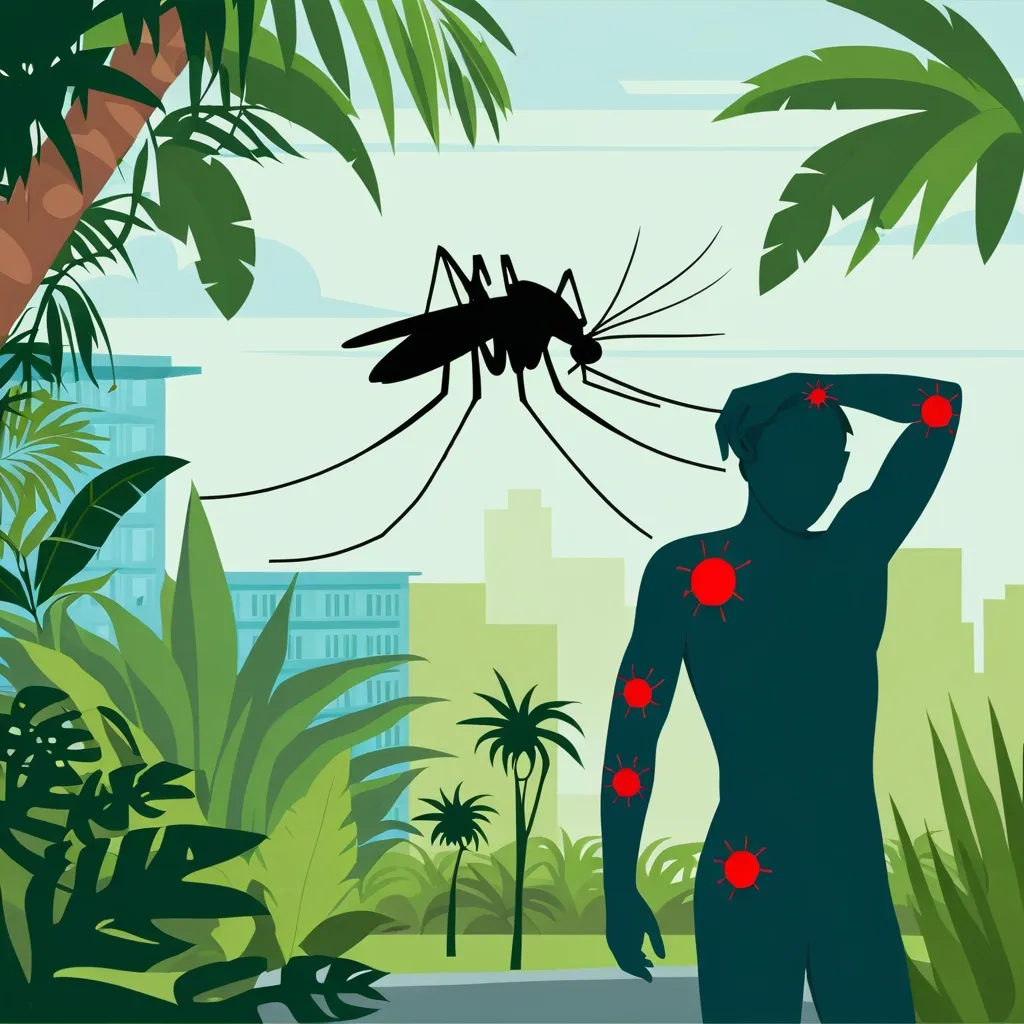Dengue fever, also known as breakbone or 7-day fever, is a major global health issue stirred up by the bite of an infected Aedes mosquito. This annoying little mosquito is spreading dengue far and wide, mostly in tropical and subtropical regions, infecting millions every year. Knowing how to spot, diagnose, treat, and prevent dengue fever is super crucial for tackling this nasty disease.
Dengue fever spreads when an infected Aedes mosquito bites you. It’s not something you catch from another person - it’s all about that bite. The virus comes in four types, and the disease is most prominent in places like India, Southeast Asia, Southern China, the Pacific Islands, the Caribbean, Mexico, and even some parts of Africa and Central and South America. For folks in the U.S., it’s mainly travelers coming back from these hotspots who bring the bug back. Although, there’s a creeping risk for people living near the Texas-Mexico border and other southern parts.
Symptoms usually kick in four to six days after the mosquito has had its fun, and they can stick around for up to 10 days. It starts suddenly with a high fever, pounding headaches, pain behind the eyes, and severe aches in joints and muscles. Add in fatigue, nausea, vomiting, and a rash that shows up a couple of days after the fever, and you’re in for a lousy time. Mild bleeding isn’t uncommon either – think nosebleeds, bleeding gums, or easy bruising. Sometimes, these symptoms might trick you into thinking it’s just flu or some other viral infection. But things can take a serious turn with dengue hemorrhagic fever or dengue shock syndrome. That’s where you face high fever, damage to lymph and blood vessels, serious bleeding, and even failure of the circulatory system - basically, a full-blown disaster.
Diagnosing dengue can be tricky since it looks a lot like measles, influenza, Zika, West Nile, chikungunya, malaria, or yellow fever. What helps is a good rundown of vaccinations, travel history, and any potential exposures. Doctors might order blood tests to check for the virus or antibodies. They often use rapid tests, like NS1 antigen detection and serological tests, but these aren’t foolproof and can sometimes give false positives, especially if there’s another similar virus involved.
When it comes to treatment, there’s no magic bullet for dengue. It’s all about supportive care. Rest up, stay hydrated, and manage the symptoms. Tylenol (acetaminophen) is your friend for fever and aches, but steer clear of NSAIDs like aspirin or ibuprofen because they can worsen bleeding. If things look bad, like severe symptoms popping up, hospitalization might be on the table. In severe cases, patients might need IV fluids to stay hydrated. If bleeding’s a major issue, blood transfusions could be needed, and in some rare instances, platelet transfusions come into play if platelet counts dive too low.
The best way to dodge dengue is to avoid mosquito bites. That means using repellents, wearing long sleeves and pants, and making sure your window and door screens are intact. Air conditioning and mosquito nets are also allies in this fight. Getting rid of standing water where mosquitoes breed – in old tires, flower pots, or cans – is another vital step to keep these pests at bay.
Untreated severe dengue can be lethal, with death rates hitting 10% to 20%. But with proper care, that number drops to about 1%. Surviving it doesn’t always mean a clean bill of health right away – some people suffer lingering damage across multiple organs. Education about severe warning signs is key. If things like belly pain, uncontrollable vomiting, or bleeding show up, getting to a hospital fast is essential.
For the milder instances of dengue where you’re nursing it at home, rest is crucial. Manage the fever and pain with acetaminophen and keep a steady intake of fluids – water, or drinks with added electrolytes, to fend off dehydration. Keeping an eye out for more serious symptoms is a must, and if they appear, don’t hesitate to seek immediate medical help.
Healthcare providers have a big role to play in the battle against dengue. It’s a team effort involving infectious disease experts, emergency room staff, and primary care clinicians. These professionals educate, diagnose, and manage dengue cases, ensuring timely intervention. Solid diagnosis might involve various tests like culture, antigen detection, polymerase chain reaction, or serological testing. Vigilance in tracking patients for complications is vital for preventing severe issues.
In a nutshell, dengue fever is a serious problem needing thorough understanding and careful management. By mastering its transmission, symptoms, diagnosis, and treatment, healthcare providers and the general public can stave off severe outcomes. With good preventive measures and quick medical help when symptoms strike, we can significantly curb the risk of this debilitating disease.






